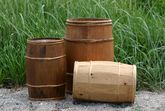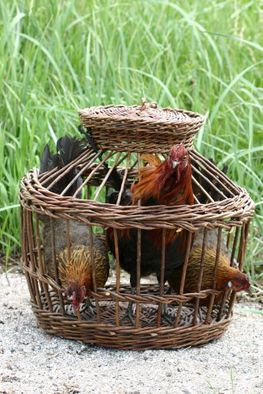Journeyman cook
One of the very few mentions of a ship’s cook is in the Orkney sagas. Here the story is told of how, when none of his other men will obey, Hakon orders his journeyman cook to murder his cousin Magnus. Apparently the journeyman cook was not in a position to refuse his master’s orders in the way a warrior could.
Eyrbyggerne's saga from 11th century Iceland says lots were often drawn for who was to prepare food on the ship. “In those days it was not the custom for traders to have journeyman cooks, but those who ate together cast lots every single day as to which of them should prepare food.”
But later in the 11th century, the job was given to one man, who received wages for his work, and from then on the written sources mention the journeyman cook more often as a member of the crew on both warships and trading ships.
Since there was no fireplace on Viking Age warships, it was unlikely that the cook could prepare hot meals on board. But Norwegian legal texts contain regulations about three daily trips ashore for the cook: one to collect water, and two to prepare meals. So many landings were possible because, as far as they could, warships took their bearings from points along coasts.
The food
The actual food eaten on board ship was called nest, farnest or hafnest, and consisted of porridge made in a large riveted pot. This kind of pot has been found in the ship graves, Tune and Oseberg.
Magnus Erlingssøn’s saga says that besides porridge ship provisions also included flour and butter. Sometimes they took dried slices of the fattiest pieces of halibut, dried cod and bread on board. Boiled or roasted meat was seldom a part of the provisions and only in special situations where the slaughter of farm animals was permitted.
By law, the amount of food for 12 men for 14 days was one ship’s pound of barley meal and three trepundslaupar with butter. This is equivalent to a daily ration of 880 grams of flour and 285 grams of butter. That is just over a kilogram of food per person, which can only be viewed as quite a lot; about what a man needs for considerable physical activity.
They drank water, brought on board in barrels or troughs. In the Norwegian ship graves, Oseberg and Gokstad, large troughs were found that could hold 500 litres and 750 litres, and several sources mention that there had to be a minimum of 4 litres per person per day.
A smaller, 125-litre barrel was also found in the Oseberg ship. These smaller barrels were probably easier to pack on a narrow longship like Skuldelev 2.
Eyrbyggerne's saga tells us:
Quote:“The whole crew also drank together; there had to be a lidded trough in which the drink was kept, but drink was also stored in smaller barrels, from which the trough was filled when it was empty.”
Beer was only found on the nobles’ or King’s warships.
Often several ships shared supplies, or there were actual supply ships as part of the fleet. This is described by the Icelandic saga poet, Snorre Sturlasson, who writes that the Norwegian king had 200 ships outfitted, as well as supply ships and transport ships.
By: Louise Kæmpe Henriksen

